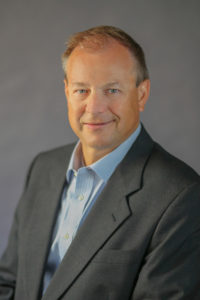
By Shawn Belling
As organizations and leadership navigate the post-COVID business environment, those organizations who have team members returning to a physical office space have a new challenge to face. What does, and what should, the physical office look like?
The physical workplace no longer serves as solely a place for people to go, sit, do work, and attend meetings. The needs of people have changed and will continue to evolve, and our work spaces must be more flexible to enable people to gather and collaborate, or break away and concentrate as needed.
I addressed how and why organizations need to rethink and reshape the purpose of their physical office locations in a webinar, Reshaping the Purpose of the Physical Office.
The topic generated much discussion and several questions that could not be covered during the webinar. In this article, I address the unanswered questions, which revolved around the “how” to rethink and overcome objections to creating a more flexible physical work space.
Q: Can you elaborate on some examples of well-designed spaces that allow for what you covered in the last slide?
At the end of the webinar, I talked about the Salesforce offices in San Francisco. The office had the coffee bar arrangement. It had couches and chairs where people could sit in casual and natural settings and work alone or collaboratively. It did have traditional conference rooms and some cubicles, but not nearly as many as you might have expected.
The other good example was the reimagined IT space at Madison College. The original design from late 2019 had space for 110 “butts in seats.” The pandemic gave us the opportunity to give 25% of the space back to the college. The redesigned space included a number of hoteling desks, partially enclosed and totally open collaborative areas, movable white boards that could be used to create temporary meeting spaces, open seating in front of the windows, and various other spaces designed for flexible gathering or individual seating.
Q: What are the best ways for trust to be established between an existing work group and new team members?
I address this topic in another CPED blog. I talk about trust as the currency of the hybrid and remote workplace. I discuss the difference between “theory x” and “theory y” managers. For starters, I recommend you research these two approaches and lines of thinking around managing and working. Essentially, theory x leaders are destined to fail and create toxic environments in the remote and hybrid workplace. Theory y leaders are needed for success.
Then there is the concept of “swift trust.” When establishing new teams, the leader should reinforce to every other member of the new team that they have essentially added “A Players” to this team, and everyone should be excited to work with each other. Then, the expectation is that each of these new team members will create a self-fulfilling situation by putting forth the effort to earn the trust of their new teammates.
Q: Is there a recommendation for when senior leadership uses a “blanket” or “umbrella” mentality towards their approach for configuring a physical workspace? For example, the configuration of the majority of the building workspaces being setup to optimize for call-center type work versus the more collaborative work that needs to happen?
If the scenario is such that senior leaders are trying to do a “one size fits all” approach to reconfiguring or reimagining space, the first step is to call that out, raise the objection, and propose an alternate approach(es). In the event that senior leaders are not open to this, the conversation or investigation needs to be more aligned with “why aren’t the senior leaders open to these ideas?”.
If you’d like to learn more about why now is the right time to rethink your physical office, view the on-demand webinar, Reshaping the Purpose of the Physical Office.
Adapting your organization and culture to support a hybrid work environment and rethinking your physical work spaces takes ongoing conversation and strategy. Set up a Discovery Session with one of the Solutions Advisors to explore how repurposing your office space can create a competitive advantage for your organization.

Shawn Belling is a globally experienced technology executive, speaker, instructor, and author based in Madison, WI. Shawn has held executive and management roles in higher education, software, consulting, bio-pharma, manufacturing, and regulatory compliance sectors. Shawn teaches, speaks, and consults for businesses, universities, and professional organizations on various leadership and management topics and practices. Shawn released his books Succeeding with Agile Hybrids in November of 2020 and Remotely Possible in June of 2021.